
William the Silent or William the Taciturn, more commonly known in the Netherlands as William of Orange, was the leader of the Dutch revolt against the Spanish Habsburgs that set off the Eighty Years' War (1568–1648) and resulted in the formal independence of the United Provinces in 1648. Born into the House of Nassau, he became Prince of Orange in 1544 and is thereby the founder of the Orange-Nassau branch and the ancestor of the monarchy of the Netherlands. In the Netherlands, he is also known as Father of the Fatherland.

William II was sovereign Prince of Orange and Stadtholder of Holland, Zeeland, Utrecht, Guelders, Overijssel and Groningen in the United Provinces of the Netherlands from 14 March 1647 until his death three years later. His only child, William III, reigned as King of England, Ireland, and Scotland.

Grave is a city and former municipality in the Dutch province of North Brabant. The former municipality had a population of 12,486 in 2021. Grave is a member of the Dutch Association of Fortified Cities.

Montferland is a municipality in the Dutch province of Gelderland. It was created on 1 January 2005 from the amalgamation of the former municipalities of Bergh and Didam.

The House of Egmond or Egmont is named after the Dutch town of Egmond, province of North Holland, and played an important role in the Netherlands during the Middle Ages and the Early modern period. The main lines Egmond-Geldern, Egmond-Gavere and Egmond-Buren-Leerdam had high noble, princely rank.
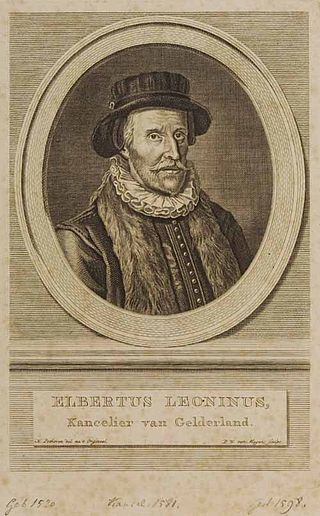
Elbertus Leoninus was the Latinized name of Elbert de Leeuw, Dutch jurist and statesman, who helped negotiate the Pacification of Ghent.
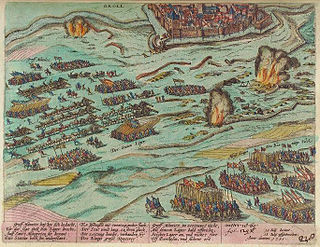
The siege of Grol or Groenlo in 1595 was a siege of Groenlo by States forces under Maurice of Nassau during the Eighty Years' War in an attempt to capture it from the Spanish Empire. It lasted from 14 to 24 July 1595, ending with the arrival of a Spanish relief force under Cristóbal de Mondragón and Maurice's retreat. Two years later, in 1597, Maurice returned to carry out another siege of Groenlo. Both these sieges formed part of what would later be called the Ten Glorious Years.
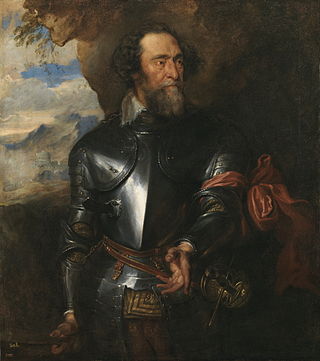
Hendrik van den Bergh, 1573 to 22 May 1638, was a Flemish noble and professional soldier. Hereditary lord of Stevensweert, from 1618 to 1637 he was also stadtholder of Upper Guelders, the only part of Guelders to remain loyal to Habsburg Spain during the Eighty Years War. Known as a brave and resourceful cavalry commander, he spent most of his career with the Spanish Army of Flanders and became its Maestre de campo in 1628. Accused of treachery after the loss of Den Bosch in 1629, he defected to the Dutch Republic following the 1632 Conspiracy of Nobles.
Maria Von Nassau-Dillenburg, Countess of Nassau, Katzenelnbogen, Vianden and Dietz, was a Dutch noblewoman.
Herman, Count van den Bergh was a Dutch soldier in the Eighty Years' War, knight of the Order of the Golden Fleece and stadtholder of Spanish Guelders.
Frederik van den Bergh was a soldier in the Eighty Years' War. His titles included Lord of Boxmeer.
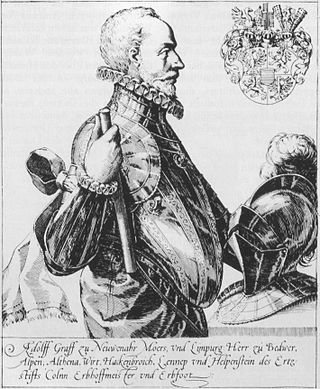
Adolf van Nieuwenaar, Count of Limburg and Moers was a statesman and soldier, who was stadtholder of Overijssel, Guelders and Utrecht for the States-General of the Netherlands during the Eighty Years' War.

Claude de Berlaymont, lord of Haultpenne, was a Flemish military commander in Spain's Army of Flanders during the Eighty Years' War.
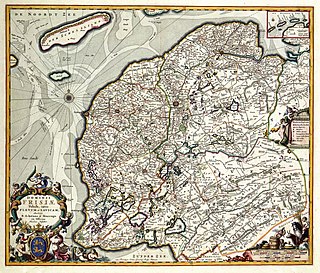
The Lordship of Frisia or Lordship of Friesland was a feudal dominion in the Netherlands. It was formed in 1498 by King Maximilian I and reformed in 1524 when Emperor Charles V conquered Frisia.

Charles II of Lalaing was Count of Lalaing, Lord of Escornaix and stadtholder of the County of Hainaut.

The siege of Zutphen was an eleven-day siege of the city of Zutphen by Dutch and English troops led by Maurice of Nassau, during the Eighty Years' War and the Anglo–Spanish War. The siege began on 19 May 1591 after a clever ruse by the besiegers. The city was then besieged for eleven days, after which the Spanish garrison surrendered.
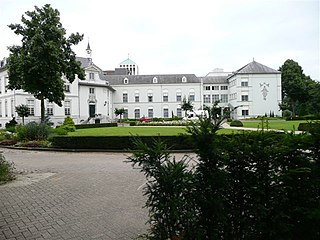
Boxmeer Castle is an originally 13th century castle in Boxmeer, North-Brabant, Netherlands. It is situated on a former island in the Meuse.

Maria Elisabeth Van den Bergh, Princess of Hohenzollern-Hechingen was a Dutch noble woman and daughter of Hendrik van den Bergh. She lived in the court of Elizabeth Stuart, Queen of Bohemia in the year of about 1628.
















